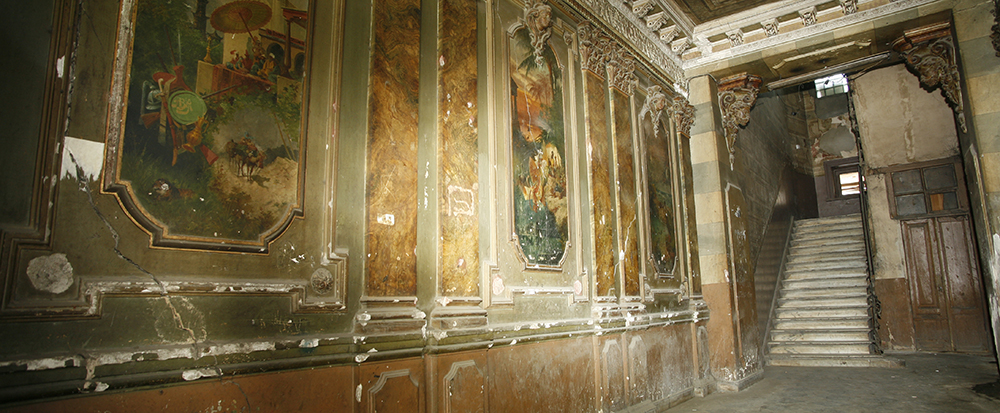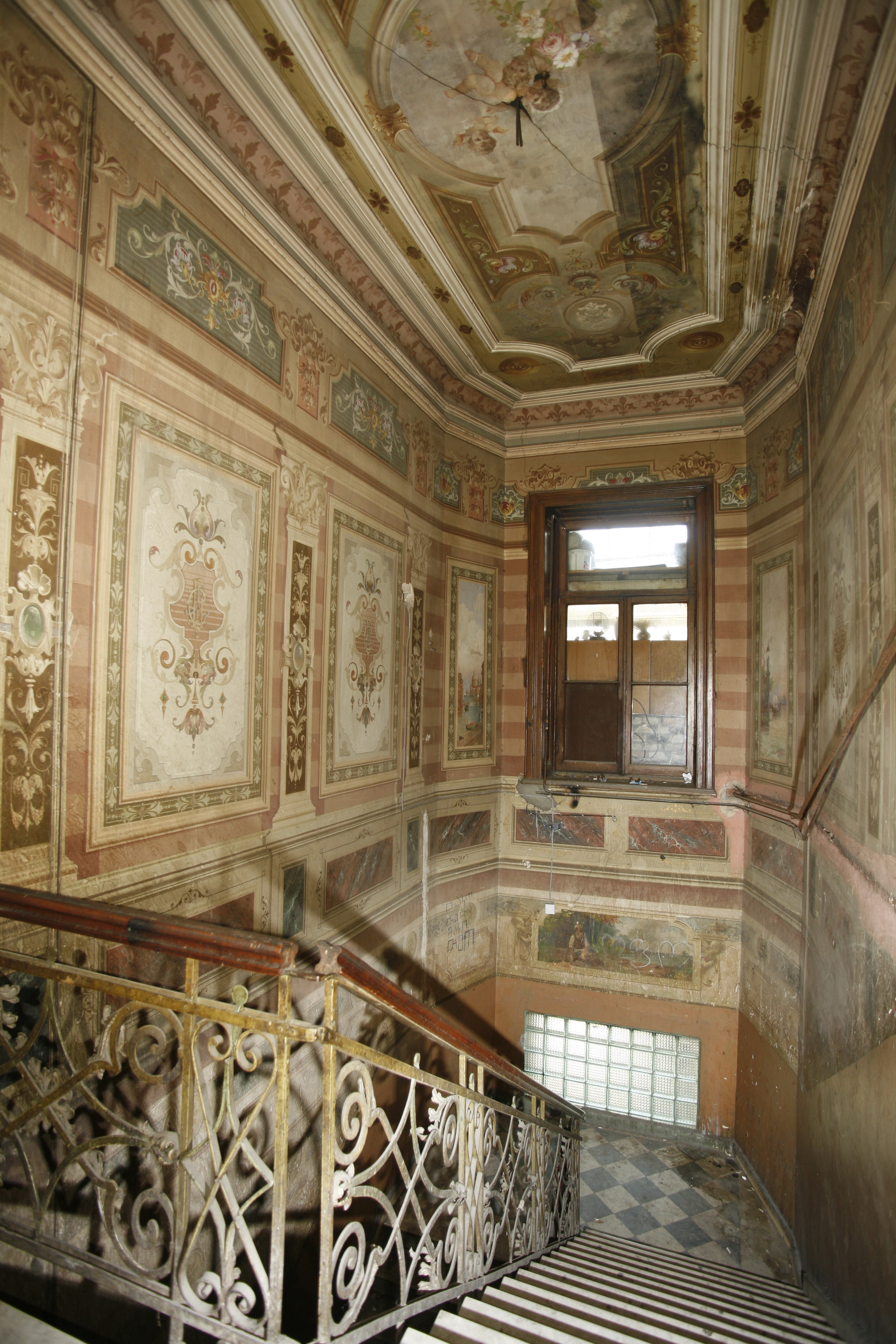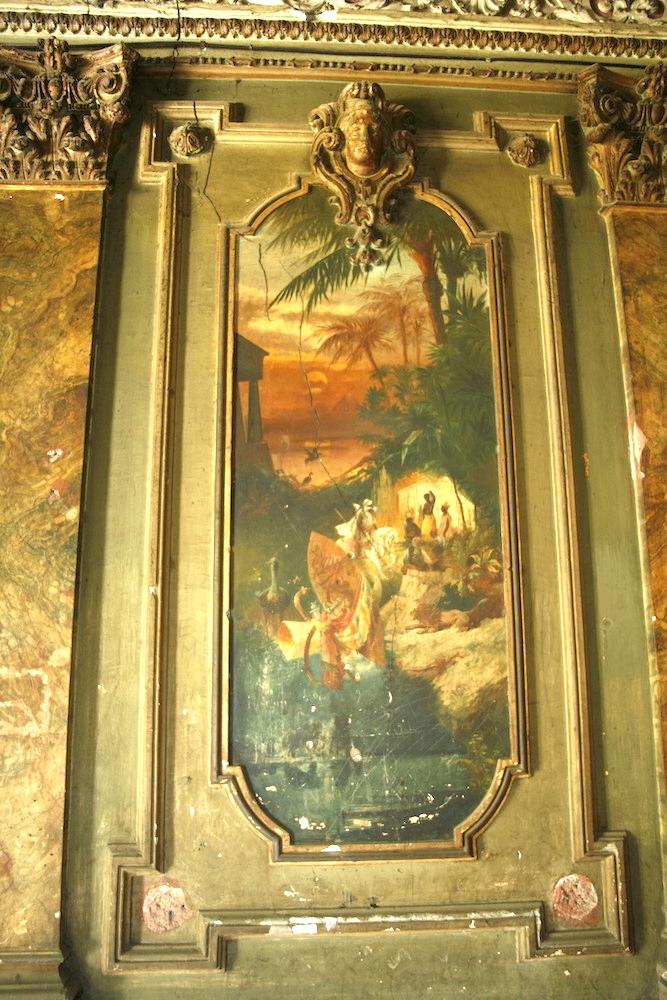
Feel free to add tags, names, dates or anything you are looking for

The 19th century was a period when the architecture of Tbilisi underwent a significant change. The entrance hall appeared in the architecture of residential houses, which became a sign of respectability and Europeanization. Since the 1850s-60s, luxuriously decorated entrance halls emerged as an important element of "fashionable" buildings. They determined the culture and atmosphere of urban life, and imparted a festive and characteristic appearance to Tbilisi’s houses. The entrance hall became a link between public and private spaces. Its style of decoration and wall paintings tells us the history and life-story of the house; gives us information about its builder, decorator, and owner; it acted as a kind of “calling card” of the owner and was thus particularly lavishly decorated.
Kikodze Street (Former Paskevich) N9
Tabidze Street (Former Hani), N18
The entrance door to the hall was usually decorated with intricate carvings and molding details; there was sometimes a
Tamar Abakelia Street (former small court), N5
Beglar Akhospireli Street (Former Moghnin), N3/7
However, the entrance halls of some houses have maintained their original decorations almost unchanged. The walls of the entrance halls, as well as the rest of the interiors, were painted in their entirety. The style of the paintings with relief wall decor is
Ivane Machabeli Street (Former Sergi), N17
Ivane Machabeli Street (Former Sergi), N17
The decor and painting of the entrance halls were produced by craftsmen and artists from Tbilisi, who were members of the Amkari guild. There was also a separate Amkari association of artist-painters – their standard-flag featured Jesus Christ and angels inscribed with medallions; the angels were depicted holding a palette, brushes and paints. In the creation of sketches and projects, decorator-artists used special editions, albums,

David Aghmashenebeli Avenue (Former Mikheili), N93
David Aghmashenebeli Avenue (Former Mikheili), N93

David Aghmashenebeli Avenue (Former Mikheili), N93
This is how an easel picture with an old frame appeared hanging on the walls of the entrance hall, together with antique statues in the niches, monograms of the owners, extensive panoramas of the Mediterranean and Italy, birds, clouds, idealized flying women on the plafond, signs of romantic exoticism, as well as "Chinese" and "Japanese" style details. At times we come across stories related to the owners’ professions, or even the history of their ancestors. For instance, at 39 Mikheil Tsinamdzghvrishvili Street, we can find allegorical motifs in the decoration of the vestibule, such as personifications of the seasons, allegories of different countries and continents, as well as images of the Garden of Eden.
Mikheil Tsinamdzghvrishvili Street (Former Elisabedi), N39
All of the above-mentioned created a carefree, peaceful life, and a romantic, cheerful mood for citizens and the residents of the house. Along with cosmopolitanism, we can also detect local traditions in the decoration of Tbilisi’s entrance halls. Tbilisi welcomed European culture along with its own unique national heritage. We can observe local themes or motifs depicted with views of the Caucasus Mountains and the Darial Gorge. Magnificent scenes of Italy and the Caucasus Mountains coexist in one space. At 36 David Aghmashenebeli Avenue, we can find scenes from The Knight in the Panther's Skin.
David Aghmashenebeli Avenue (Former Mikheili), N36
David Aghmashenebeli Avenue (Former Mikheili), N36
The paintings of these entrance halls seem to create an ideal micro-universe, where West and East, fairy tale and reality are merged. Along with the foreign artists, Georgian artists are also featured – e.g. G. Zaziashvili, Ivane Vepkhvadze, E. Kipiani and others. What if Niko Pirosmanashvili (Pirosmani), who also painted on walls, had drawn his sketches on one of these entrance halls...?
One entrance hall that particularly stands out is that of 20 Ketevan Tsamebuli Avenue, which was painted by G. Zaziashvili, where the artist created three large paintings instead of using the typical interior painting template. One depicts Alaverdoba, and the other two are views of Manglisi.
Ketevan Tsamebuli avenue, N20
Ketevan Tsamebuli avenue, N20
The establishment of Bolshevik power brought an end to the short-lived tradition of decorating entrance halls in an artistic style. The ideology of the proletarian state fought mercilessly against such "bourgeois" images. The paintings and molded sculptures of the entrances that have survived appear as a romantic memory of a foregone era, and give rise to a dizzying charm among visitors. It is as if the distant past is brought back to life, when Tbilisi’s houses were shining festively with gilded or mosaic ornaments, with brightly-colored, freshly-painted walls, while the rays of colorful light entering from stained glass skylights added even more life and vivacity to the interiors.